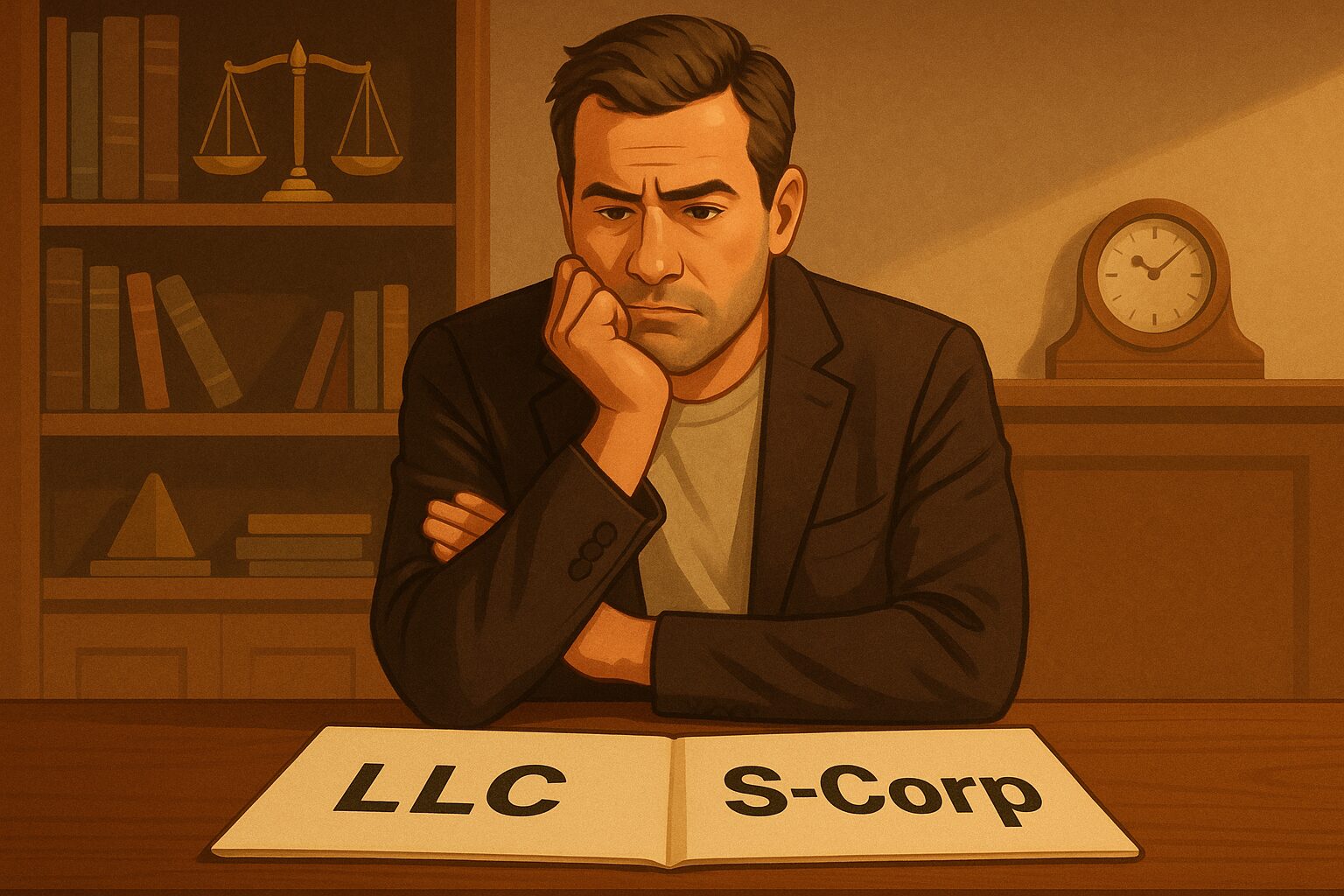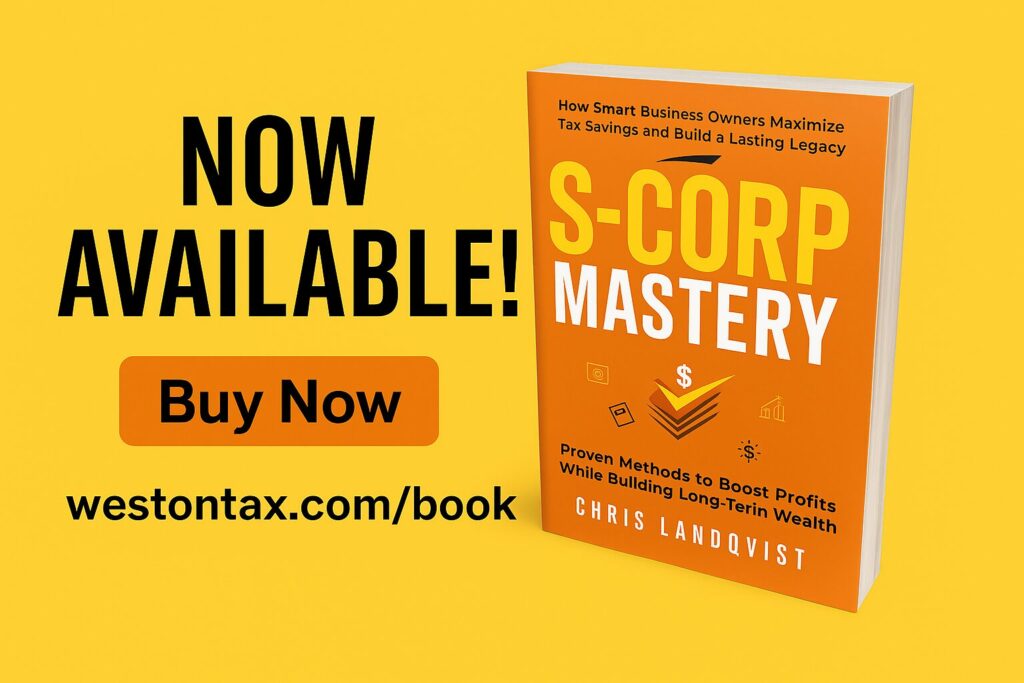Qualified Small Business Stock (QSBS) offers a tax-saving opportunity under Section 1202 of the U.S. tax code. If you invest in eligible small business stock and hold it for a specific period, you could exclude up to 100% of your capital gains from federal taxes. Here’s what you need to know:
- 5-Year Requirement: For QSBS issued before July 4, 2025, you must hold the stock for at least five years to qualify for the full tax exclusion.
- New Rules After July 4, 2025: For shares issued on or after this date, the exclusion phases in:
- 3 years: 50% exclusion
- 4 years: 75% exclusion
- 5 years: 100% exclusion
- Limits: The exclusion applies to the greater of $10 million (increasing to $15 million for shares issued after July 4, 2025) or 10 times your original investment.
Timing is everything. Selling before meeting the holding period means paying standard capital gains taxes. Exceptions, like rollovers under Section 1045, allow deferral of taxes if you reinvest in new QSBS within 60 days.
Why does this matter? QSBS is designed to reward long-term investments in small businesses, making it a valuable tool for founders, employees, and investors. Keeping detailed records and consulting tax professionals is crucial to maximize these benefits.
What is QSBS and Section 1202
QSBS Definition
Qualified Small Business Stock (QSBS) is a U.S. tax provision under Section 1202 that offers significant tax breaks to investors in small businesses. It’s designed to encourage investments in startups and growing companies by providing substantial tax relief when the stock is eventually sold. Essentially, it’s a reward for taking risks on emerging businesses.
Section 1202, introduced through the Omnibus Revenue Reconciliation Act of 1993, lays out the rules for this tax exclusion. The law acknowledges the challenges small businesses face in attracting equity funding compared to their larger counterparts.
"The committee believes that targeted relief for investors who risk their funds in new ventures, small businesses, and specialized small business investment companies, will encourage investments in these enterprises. This should encourage the flow of capital to small businesses, many of which have difficulty attracting equity financing." – H.R. Rep. No. 103-111, 600
This framework sets up the foundation for the tax benefits described below.
Tax Exclusion Benefits
Section 1202 allows non-corporate taxpayers to exclude up to 100% of capital gains from federal taxes, including the 3.8% Medicare surtax. This can save investors up to 23.8% in federal taxes. Many states also align with federal rules, which can lead to even greater savings.
The exclusion applies to the greater of $10 million or 10 times the adjusted basis of the stock at the time of issuance. Importantly, for stock issued after July 4, 2025, the $10 million cap increases to $15 million.
Here’s an example to illustrate the impact: Fox Mulder invested $2 million in Spooky, Inc. stock on January 1, 2011. When he sold the stock for $22 million on June 1, 2016, he realized a $20 million gain. Thanks to Section 1202, he excluded the entire $20 million gain and paid $0 in federal taxes. Without this provision, he would have owed $4,760,000 in taxes. Since his state also followed federal rules, he saved an additional $1 million. Total tax savings: nearly $6 million on a $22 million transaction.
Understanding these benefits is crucial to determining who qualifies for them.
Who Qualifies for QSBS
To qualify for QSBS, both the issuing company and the shareholder must meet specific criteria. First, the company must be a U.S. C corporation with gross assets of $75 million or less at all times before and immediately after issuing the stock (for shares issued on or after July 4, 2025). For shares issued before this date, the limit is $50 million.
Additionally, the company must use at least 80% of its assets in an active trade or business. However, certain fields like health, law, and other professional services are excluded.
On the investor side, only individuals, trusts, and pass-through entities that acquire the stock directly from the issuing company are eligible. The stock must be purchased with cash, property, or as payment for services. Direct acquisition is a key requirement.
"We want to reward the startup entrepreneur who will commercialize the next generation of technology in the United States, whether in artificial intelligence, microelectronics, biotechnology, advanced materials, or environmental engineering." – Senator Kerry of Massachusetts
This direct investment requirement ensures that the tax benefits go to those who are actively supporting small businesses. As a result, venture capitalists and angel investors have become increasingly focused on ensuring the companies they back comply with QSBS rules.
5-Year Holding Period Requirements
Holding Period Rules
To qualify for QSBS tax benefits, you must hold the stock for at least five years. This holding period begins the day after the stock is acquired.
For convertible securities like notes, options, or warrants, the clock starts ticking only after conversion. For example, if you were granted stock options on March 1, 2020, and exercised them on June 1, 2022, your five-year holding period would begin on June 2, 2022. You’d need to hold the stock until at least June 2, 2027, to take advantage of QSBS benefits.
Starting July 4, 2025, the holding period for newly issued shares drops to three years, with phased tax benefits. This adjustment underscores the program’s focus on long-term investments while offering a shorter timeline for future acquisitions.
Why the 5-Year Rule Exists
The five-year holding period isn’t arbitrary – it’s designed to promote long-term investment in small businesses. Congress implemented this rule to ensure that QSBS benefits reward investors who are committed to supporting small businesses over time, rather than those looking for quick profits.
This requirement aligns with the purpose of Section 1202: to direct patient capital toward emerging businesses that need time to grow and scale. Many small companies take years to reach profitability, and the five-year commitment ensures investors stick around to help these businesses through their critical early stages. By discouraging rapid stock turnover, the rule also helps prevent misuse of the tax incentives.
Holding Period Tax Benefits Comparison
The tax advantages tied to QSBS depend on when you acquired the stock and how long you held it. Here’s a breakdown of the exclusion percentages based on acquisition date and holding period:
| Acquisition Date | Holding Period | Exclusion Rate |
|---|---|---|
| Before July 4, 2025 | Less than 5 years | 0% (standard capital gains tax applies) |
| Before July 4, 2025 | 5+ years | Up to 100% |
| July 4, 2025 and after | 3 years | 50% |
| July 4, 2025 and after | 4 years | 75% |
| July 4, 2025 and after | 5+ years | Up to 100% |
Selling your shares before meeting the required holding period will subject you to standard capital gains tax. Missing out on the QSBS tax benefits can be a costly mistake, so timing is crucial.
Certain exceptions can alter the holding period rules. For instance, if you receive QSBS through a gift, partnership distribution, inheritance, or a tax-free exchange or reorganization, alternative guidelines may apply. Additionally, Section 1045 allows you to defer taxes by reinvesting the proceeds from a QSBS sale into new QSBS within 60 days. This provision offers flexibility for those looking to maintain their investment in qualifying small businesses while deferring taxes.
How to Qualify for QSBS Tax Exclusion
Check QSBS Eligibility
Before you can take advantage of the five-year holding period for QSBS (Qualified Small Business Stock) tax benefits, your investment must first meet the necessary eligibility requirements. These include specific criteria around the company’s asset size and corporate structure, as previously outlined.
The 80% active business test is a key requirement. This means at least 80% of the company’s assets must be actively used in a qualifying trade or business. Essentially, the company must be actively operating, not just holding passive investments.
To prove compliance, companies should maintain detailed records of their gross assets and business activities. For example, if a partnership contributes property to a QSBS issuer, the property must be valued at its fair market value for the purposes of meeting the asset test.
Once you’ve confirmed eligibility, focus on maintaining thorough records. Proper documentation will be crucial in supporting your claim.
Track and Document Your Holding Period
After confirming QSBS eligibility, the next step is to carefully track your holding period. This documentation will be essential if the IRS reviews your claim for the tax exclusion.
Your holding period begins the day after you acquire the stock. Make sure to document every transaction accurately. Keep original stock certificates, purchase agreements, option exercise documents, and any corporate resolutions related to your stock issuance. If you acquired stock through a tax-free contribution or exchange, maintain records to confirm the transaction qualified under the relevant tax code sections.
Additionally, monitor any events like stock splits, dividends, or corporate reorganizations that could impact your shares. These events don’t reset your holding period, but you’ll need proof that connects your current shares to the original issuance.
How Secondary Transactions Affect Eligibility
Secondary transactions can complicate your QSBS eligibility, so understanding their impact is crucial. Missteps here could cost you the tax benefits.
Secondary purchases are not eligible for QSBS tax exclusions. If you buy stock from another shareholder instead of directly from the issuing company, you won’t qualify for the exclusion. The original shareholder might still be eligible if all conditions are met, but the QSBS status doesn’t transfer to your purchase.
Selling early forfeits benefits. If you sell or exchange your QSBS in a taxable transaction before completing the five-year holding period, you lose the opportunity to exclude the gains on those shares. However, you might be able to defer taxes by using a Section 1045 election to reinvest the proceeds into another QSBS investment.
For shares issued after July 4, 2025, partial exclusions become available for early sales. Gains can be excluded at 50% after three years and 75% after four years, even if you don’t meet the full five-year requirement for a 100% exclusion.
Offsetting short positions can void QSBS status. If you create an offsetting short position during the first five years of ownership, the QSBS status of the affected stock is terminated. This rule is designed to prevent investors from hedging their positions while still claiming tax benefits.
Certain exceptions allow transfers without losing QSBS status. For example, you can transfer QSBS by gift, at death, or from a partnership to a partner without affecting its qualification. These transfers also allow the recipient to continue the original holding period.
When planning mergers, acquisitions, or secondary sales, it’s essential to structure transactions carefully to meet the five-year holding period and maximize potential tax savings. For complex situations or tailored advice, consulting with professionals like Weston Tax Associates can provide valuable guidance.
sbb-itb-99cfa38
How to Maximize QSBS Tax Benefits
Plan for the Holding Period
To take full advantage of QSBS tax benefits, careful planning of your holding period is essential. Timing plays a crucial role in meeting the five-year requirement.
One way to get ahead is by exercising stock options early. This starts the clock on your holding period much sooner than waiting for a liquidity event like a company sale. Speaking of liquidity events, strategically delaying them can give key shareholders enough time to meet the holding period requirement.
For those considering an early exit, there are options to preserve your benefits. Equity rollover transactions let you transfer your holding period to a new investment, while a Section 1045 rollover allows you to reinvest proceeds within 60 days without losing the tax advantages. If these aren’t feasible, negotiating a higher acquisition price can help offset the tax impact of an early sale, ensuring your net proceeds are closer to what they might have been if you’d met the holding period.
Even with a solid strategy, it’s critical to avoid missteps that could disqualify your QSBS eligibility.
Avoid Common Mistakes
Mistakes like premature sales or failing to meet key requirements can cost you QSBS benefits. While recent legislation allows for partial exclusions under specific conditions, the full exclusion still hinges on satisfying the five-year holding period.
You’ll also want to keep an eye on asset thresholds, the active business test, and proper documentation. For example, Beyond Meat lost its QSBS status after its assets exceeded the $50 million limit. Kleiner Perkins, which held about 16% of Beyond Meat from 2011 to 2017, benefited significantly from QSBS tax reductions. However, Beyond Meat’s qualification ended in 2017 when it surpassed the asset threshold.
Poor recordkeeping can also jeopardize your benefits. Cases like JU v. Commissioner and Holmes v. Commissioner highlight how insufficient documentation can lead to penalties and the loss of tax advantages. Additionally, actions like share repurchases or major shifts in a company’s business model can unexpectedly disqualify QSBS status.
Work with Tax Professionals
Given the complexities of QSBS regulations, working with tax professionals is a smart move. Their expertise ensures you stay compliant and make the most of available tax benefits.
"Utilizing these workarounds requires careful planning, precise execution, and thorough documentation. QSBS holders should work closely with competent legal and tax advisors to ensure compliance."
- Mark Tyson, Founding Partner, TKN Tyson
Tax advisors are invaluable for staying on top of legislative changes, structuring transactions, and maintaining detailed records. Their support can be especially helpful during IRS audits, where thorough documentation is key to defending your QSBS claims.
Firms like Weston Tax Associates specialize in navigating complex tax rules, including QSBS compliance, by combining technology-driven strategies with experienced advisory services.
"Professional guidance is essential when navigating QSBS complexities to ensure compliance and maximize potential tax benefits."
- Peter Stratus and Einat Laver, Kaufman Rossin
Key Points About the QSBS 5-Year Rule
The QSBS five-year holding period rule plays a major role in qualifying for tax benefits under Section 1202. Following this rule can mean the difference between paying up to 37% in short-term capital gains taxes or enjoying a complete federal tax exclusion on your stock sale proceeds.
The clock for the holding period starts the day after you acquire (or convert) the stock. Missing the five-year mark by even a single day can disqualify you from the full benefits. For shares issued on or after July 4, 2025, the rules offer tiered benefits: after three years, you can exclude 50% of capital gains; after four years, 75%; and after five years, the full 100%.
QSBS provides a significant tax shield, allowing you to exclude up to 10 times your investment or $15 million (whichever is greater) from federal long-term capital gains taxes.
Keeping accurate records is crucial for QSBS compliance. This includes tracking acquisition dates, company asset details, and any relevant transactions. Beyond documentation, the five-year rule is designed to encourage long-term investment in small businesses, fostering economic growth by promoting patience in capital allocation. However, it’s worth noting that a company can lose its QSBS status during your holding period if it exceeds asset limits, engages in large share repurchases, or transitions to a non-qualifying business model.
If you need to sell early, there are options to consider. Equity rollover transactions can preserve your holding period, while Section 1045 rollovers allow you to reinvest proceeds without losing QSBS benefits. These strategies, however, require precise execution and thorough documentation to remain compliant. They align well with broader tax planning strategies discussed earlier.
Given the complexity of QSBS regulations, working with a seasoned tax professional is highly recommended. Experts can help you navigate the details, structure transactions correctly, and maintain the records needed to support your QSBS claims during potential IRS reviews. Specialized firms like Weston Tax Associates combine technology-driven tools with experienced advisors to guide you through these intricate requirements effectively.
FAQs
What are the risks of investing in Qualified Small Business Stock (QSBS)?
Risks and Challenges of Investing in QSBS
Investing in Qualified Small Business Stock (QSBS) isn’t without its hurdles. One notable risk lies in the strict eligibility requirements. If the company or stock doesn’t meet the necessary criteria, you could miss out on the tax benefits entirely. On top of that, the rules surrounding QSBS can be complicated, which might lead to mistakes or even draw unwanted attention from the IRS.
Another challenge is the inherent risk tied to small businesses. These companies often face financial uncertainty or may not achieve the growth you expect, which could negatively affect your investment. To navigate these risks effectively, it’s crucial to plan carefully and seek professional advice. Firms like Weston Tax Associates can help ensure you stay compliant and make the most of the available tax benefits.
How will the QSBS holding period changes after July 4, 2025, affect my small business investment strategy?
The QSBS 5-year holding period rules are set to change after July 4, 2025, and these updates could have a notable impact on your investment approach. After this date, stock issued by qualified small businesses will still need to be held for 5 years to qualify for the full 100% capital gains exclusion. However, for certain stock issued after this date, a shorter 3-year holding period might apply to a portion of the gains.
These adjustments aim to promote long-term investments in small businesses by maintaining significant tax benefits while introducing added flexibility for newer stock. If you’re mapping out your investment strategy, it’s crucial to factor in these changes to align your portfolio with the updated rules and optimize your tax savings. For tailored advice, reaching out to seasoned tax professionals, such as the team at Weston Tax Associates, can provide the insights you need to confidently navigate these changes.
What records should I keep to prove my QSBS eligibility during an IRS audit?
To back up your QSBS eligibility during an IRS audit, it’s crucial to keep well-organized and thorough records. Essential documents to have on hand include:
- The issuer’s Form 1120 tax returns and financial statements
- A QSBS attestation letter
- Documentation showing the date you acquired the stock
- Detailed records of your holding period
- Corporate records and any correspondence verifying QSBS status
Having these records properly organized and easily accessible will make it much easier to support your claim if the IRS comes knocking.

Chris is the Managing Partner at Weston Tax Associates, a best-selling author, and a renowned tax strategist. With over 20 years of expertise in tax and corporate finance, he simplifies complex tax concepts into actionable strategies that drive business growth. Originally from Sweden, he now lives in Florida with his wife and two sons.








